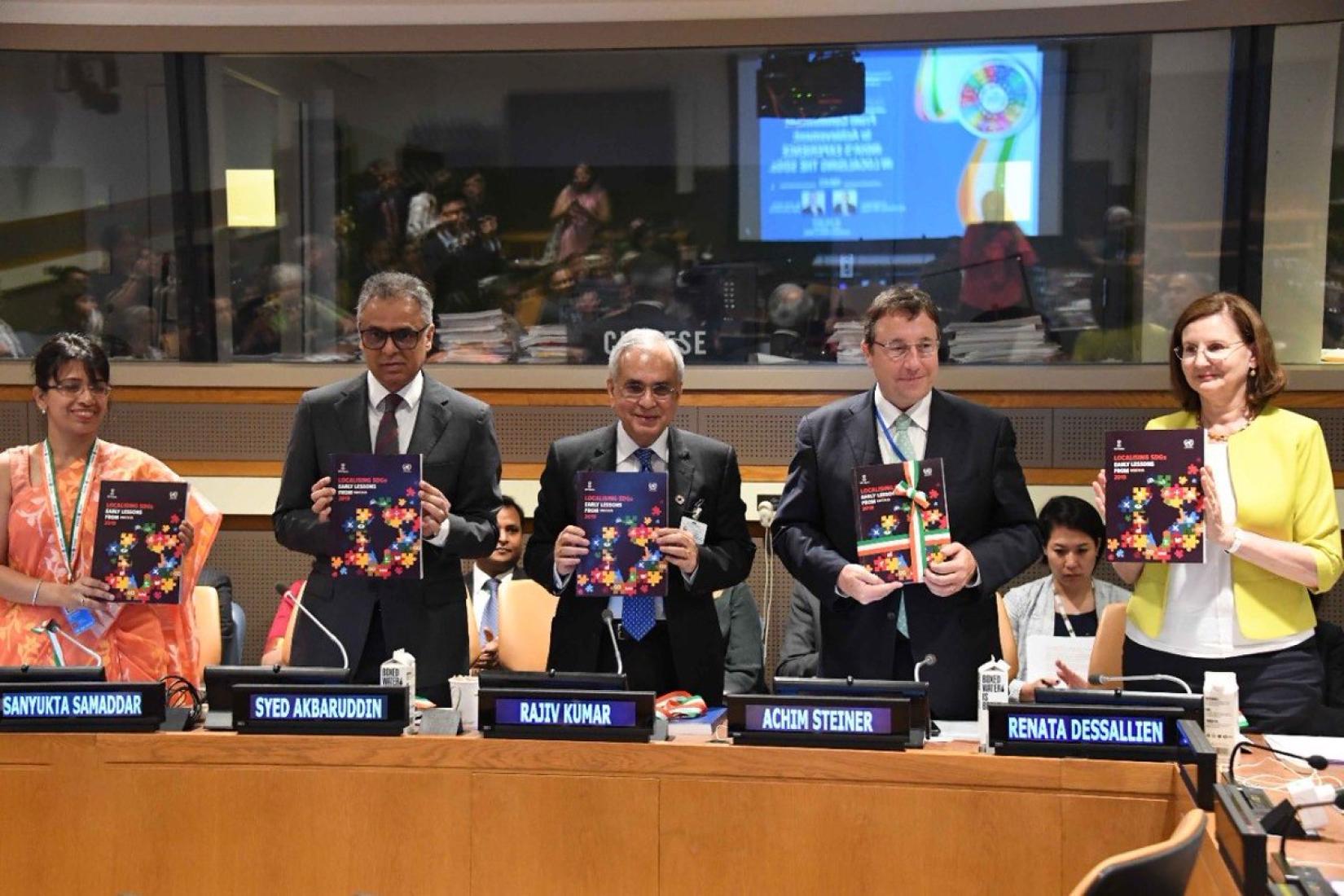Speech
From Commitment to Achievement: India’s Experience in Localizing the SDGs
17 July 2019
High Level Political Forum 2019
NITI Aayog and United Nations in India
Renata Lok-Dessallien, United Nations Resident Coordinator in India
(Speech…

High Level Political Forum 2019
NITI Aayog and United Nations in India
Renata Lok-Dessallien, United Nations Resident Coordinator in India
(Speech as prepared)
Mr. Achim Steiner, Administrator UNDP and Vice Chair of the UN Sustainable Development Group,
Dr. Rajiv Kumar, Vice Chairman NITI Aayog, and Chair of this session,
Ambassador Akbaruddin, Permanent Representative of India to the United Nations,
Distinguished guests, colleagues,
Good afternoon and Namaste,
- What a privilege it is for me to represent the United Nations Country Team in India at this critical High-Level Political Forum, four years into Agenda 2030. In the distance between 2019 and 2030, the game changer is India: where sustainable development, inclusive development, as envisaged in our shared vision for 2030, is not a standalone project, but the core of the national thinking about development.
- The world today is looking at India not only because of its share of the global population and the sheer scale of its ambition, the world is looking to India as the epicenter of global progress on the SDGs. The country has emerged as a leading force for climate action, for some of the planet’s biggest social and developmental schemes and programmes, and as an engine of growth as one of the fastest growing major economies.
- India is a frontrunner in its global and national commitments to the principles and targets of the Sustainable Development Goals. Prime Minister Narendra Modi’s personal commitment and push for Agenda 2030, and India’s won progressive vision for India 2022 have made the SDGs a national mission in the truest sense. Not only was India one of the key shapers of the agenda, its localization and institutionalization of the SDGs has been an exemplary project and one that has lessons for the world.
- And its results have been concrete: 271 million people moved out of poverty and the incidence of multidimensional poverty was halved between 2005/6 and 2015/16. The poorest groups across states, caste and religious communities, and ages, had the biggest reductions in multidimensional poverty.
- It is why we are partnering in this side session today: to showcase what India has achieved and to take the conversations from India’s policy spaces to the experiences and challenges of countries in the region and beyond.
- The discourse on the SDGs in India has put the spotlight on mainstreaming. A National Indicator Framework contextualizes the SDG targets for the country and formalize the way in which SDG achievement will be measured. NITI Aayog as the coordinating agency for the SDGs within the government has worked most proactively to localize the goals, not only through institutional frameworks, but also through encouraging the focus on marginalization.
- We are especially excited to share with you the SDG India Index. With the launch of the baseline report and Index dashboard last year, supported by the UN, India became the first country to track its progress on the goals at the subnational level. The index enables states within India (some of them the size of continents – eg. Uttar Pradesh which is home to 200 million people), to benchmark and compare progress, and identify priority areas and gaps.
- State governments in India have been equal partners in the institutionalization of the SDGs. The UN continues to support the development of state vision documents and capacity aligned with the goals at the state level.
- The government and the UN alike have emphasized the need for real-time data driven decision making and monitoring. In order to ensure the SDGs become more than a campaign, policymaking and implementation plans across the goals must be measurable, outcome driven, evidence-based, and informed by thorough data analytics. We must deploy foresight techniques and technology to operationalize good intention, and are, in fact, taking commendable steps in this direction.
- We are also pleased to showcase the SDG Dashboard, also developed with the support of the UN, which was inaugurated this year as the official data repository of the National Indicator Framework on the SDGs and a tracker of progress on the goals. It brings together development data from different government sources and collates it intelligently into a console that helps us visualize progress.
- When we talk about institutionalizing and localizing the SDGs, we must talk about institutionalizing the voices of the most vulnerable in our decision making. India’s institutional frameworks like the fascinating Aspirational Districts programme, ambitious national targets on renewable and affordable energy, Ayushman Bharat, Beti Bachao, and Swachh Bharat, while not bearing an explicit SDG label, are convergent with the core principles of Agenda 2030: to Leave No One Behind.
- The UN in India has also partnered with the Government of the state of Maharashtra to set up an Action Room on Poverty to initiate the localization of the SDGs in 125 poorest blocs of the state. These are the initiatives that have potential to go to scale and the models that we will need to engage for course correction towards 2030 at this HLPF.
- SDG localization is more than just adaptation of global goals to local contexts: first and foremost it is about ownership, about political will, about empowering communities to build local solutions to global challenges.
- I said before that the SDGs must be more than a campaign. But they can be a movement.
- And India’s example will be important in this regard, not only because of its size, but for the innovations and advances that will be forged there, and because of the political will it is inspiring, around the planet, on sustainable development.
If India achieves the SDGs, the world will achieve them.
UN entities involved in this initiative
UN
United Nations


















